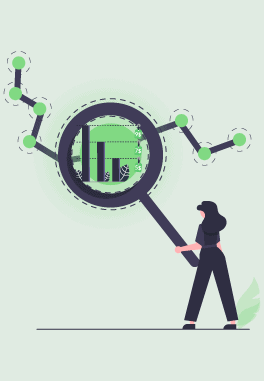Estimated reading time: 5 minutes
Table of contents
Price management is a significant problem faced by many companies, including retailers, because errors in price tracking can lead to improper results, leading to lost profits. Traditional price management techniques are prone to errors, preventing companies from achieving optimal pricing.
Dynamic pricing algorithms help businesses make informed pricing decisions. It allows eCommerce companies to change prices frequently and gather real-time feedback data. As a result, the company can respond to demand changes effectively, automate price management and reduce the risk of forecasting errors.
Besides, you can use these pricing algorithms to optimize demand, supply, subsidiary products, and competitive prices. The purpose is to make informed decisions, stay flexible, and adjust prices according to your business needs. In today’s article, we will discuss dynamic pricing algorithms. Read on!
How do dynamic algorithms work?
Dynamic algorithms use artificial intelligence (A.I.) and machine learning (ML) technologies for price management, ensuring scalability and allowing companies to make informed decisions. In addition, these algorithms enable companies to achieve portfolio-level pricing by considering implicit and explicit dependencies.
Besides, these algorithms help retailers bring flexibility in their pricing operations, allowing them to set prices for different shopper groups. Depending on your needs, you may consider factors like market trends, customer behavior, buying patterns, and demand fluctuations to set an optimal value.
Dynamic algorithms focus on a core estimation, a dependency between price and demand. And they consider a wide range of other pricing and non-pricing factors to extend the formula. These factors are:
- Procurement expenses
- Demand cannibalization
- Competitor prices
- Products
- Promo activities
- Inventory costs
The pricing algorithm processes relevant data points, leading to precise and accurate results. Depending on the retailer’s needs, most pricing algorithms also focus on sales data. The algorithm uses this historical sales data to estimate the demand function.
Typical pricing algorithms workflow
Pricing algorithms allow companies to update prices more frequently and make informed decisions through automation technologies. The purpose is to develop pricing strategies that can react to competitors’ price changes. A typical pricing algorithm has four stages:
- Stage 1: The algorithm processes the historical sales data, pricing points, and product demand.
- Stage 2: The algorithm uses identified dependencies to build the demand function and streamline the pricing strategy.
- Stage 3: The cutting-edge algorithmic processes and mathematical models use a wide range of pricing and non-pricing factors to yield correct estimations and optimal prices.
- Stage 4: The algorithm applies the recommended prices and reruns the loop for the latest repricing results.
Bear in mind that this four-stage workflow is a basic pattern/general phase, meaning the algorithm must align with the retailer’s specific cases, targets, and constraints. Some companies develop dynamic algorithms based on cutting-edge neural networks that can process millions of repricing situations to generate accurate results.
Creating a forecasting algorithm for price tracking or price management is complicated because the model may not align with every case. Therefore, it is crucial to use a software system with dynamic algorithms that align with your business goals and needs.
Factors to consider when choosing a dynamic pricing algorithm
A typical dynamic algorithm uses historical data for price tracking and management. It means they use passive strategies to learn the demand function. If your products have a long life cycle, you may not face any issues. However, if you have products with a short life cycle, you will face a wide range of difficulties. The same is true for new products and an unstable demand function.
Remember, this can lead to inaccuracies in pricing strategies, leading to substantial financial risk for your company. The primary problem faced by most retailers revolves around exploration and exploitation because they fail to find optimal prices.
For instance, this is often due to a limited time, preventing retailers from testing pricing techniques and gathering the demand points. So, it is crucial to choose the correct pricing algorithm or system to ensure it aligns with your specific strategy.
Common factors, such as overall market strategy, business goals, and company maturity levels play a crucial role in choosing a dynamic algorithm or model. Here are a few essential goals to consider when choosing a pricing algorithm.
Maximum revenue
Suppose you want to increase your revenue by selling your products with unknown demand functions. In that case, you need a dynamic algorithm that builds a demand function by considering factors like sales history for similar products. That way, the algorithm performs essential calculations to generate prices, leading to maximum revenue.
Increased gross profit
Depending on your goal, if you want to avoid dropping marginality and increase gross profit, you need a dynamic algorithm designed to balance these two metrics (gross profit and marginality) to generate a price.
Improved customer experience
Dynamic algorithms can help avoid inconsistent customer experience. So, if your goal is to improve customer experience and satisfaction without any complications, you should aim for an algorithm that focuses on satisfying a specific service level.
Zero or minimized cannibalization
As a retailer, your goal is to minimize cannibalization between your products. In that case, the dynamic algorithm you use must generate prices for your new products without risking the Key Value Items (K.V.I.s) sales.
Moreover, if you wish to use a pricing algorithm for your business operations, make sure you have clear and S.M.A.R.T goals of your company or retail shop position. That way, you can streamline the pricing strategies and help your managers to avoid time-consuming work.
Final words
Dynamic pricing algorithms use cutting-edge machine learning and artificial intelligence technologies for price management. The purpose is to increase your products’ prices and capitalize on demand. Using these algorithms enables you to stay competitive in retail or any other market.
We recommend using dynamic algorithms to analyze and streamline the demand curve for your customers, leading to an accurate display of the demand curve with the min/max price customers want to pay for your products. In addition, you can gather more data on your customers, analyze behavior patterns and purchasing attitudes using a dynamic algorithm.
pricing strategies


Could you please add the DYNAMIC PRICING plugin's official website link?